Paint analysis using fluorescence microscopy confirmed the accuracy of polychrome renderings from the 1790s. Neither Charles Willson Peale or other contemporaneous painters took what had been perceived in the 20th century as artistic license. Rather the physical evidence remaining in place beneath another 150 years of oil paint after this 2011 restoration showed the original use of a “poor man’s gold” technique for coloring the Maryland State House dome. This is in keeping with the stylish early history of Annapolis. (When Maryland was briefly the nation’s capitol it was know as “the Bath [England] of America” due to being a small but mighty style powerhouse as evidenced by houses like Hammond Harwood, Chase Lloyd and the Brice House).
2023 update: Unfortunately the need to repair the sprinkler systems in the dome and damage done to paint on the exterior from the sprinkler system necessitating scaffolding the dome and thus began a process that led this last year to the complete removal of all original evidence of the historic color scheme and loss of most original elements. This included full slate and large-scale shingle replacement based on the erroneous statement released by Governor Hogan’s office that the historic elements had reached the end of their service life.

The 2011 Maryland State House Dome project highlights how the past was often more colorful than the chaste sepia tones we imagine. It also provides a great example of how improved paint analysis methods — specifically including fluorescence microscopy with protein staining approaches migrated from organic chemistry — can elucidate more than just paint color history. It also allow the dating of paint layers based on their constituent ingredients.
Knowing more about the paint formulations has the added benefit of allowing for selective stripping of some layers of overpaint while leaving historic evidence intact.
Cratering through the paint layers to get a first glimpse at the color history of the now white-painted dome. Clearly there was a long history of color in the earlier layers. In fact the fluorescence microscopy confirmed that a glazed effect with a lighter yellow beneath and a more golden glaze atop — just as this scraping exhibits — was the earliest paint scheme for much of the Maryland State House dome.
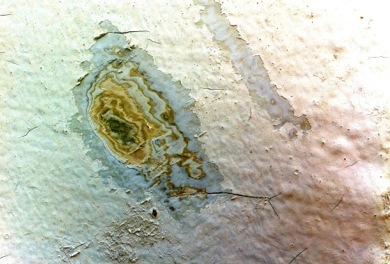
A repeated problem of restorations in the last few decades have been thinking in terms of paint as just being a color. Historic finishes of this era were often achieved with glazes to give three-dimensionality to surfaces. Additionally many historic interiors have been painted out in seemingly odd color schemes during restorations that reverted to the base color for a wood graining scheme but overlooked the intended appearance that comes from base color, grain colors, and then a tinted glaze (another problem that has also plagued interior restorations at the Maryland State House in recent years).
With the assistance of fluorescence microscopy you can not only determine the colors but distinguish each layer even when the same color has been applied multiple times (often with dirt embedded between layers) and determine the type of coatings used (emulsion, oil, natural resin, latex etc.). Understanding the types and sequence of finishes can also help in dating the coatings.


In fact the microscopy from a portion of the dome suggested this two-tone appearance. We recreated a sense of the likely intended original appearance in a sort of “poor man’s gold” glaze applied over a slightly flesh-colored base tone. It turns out the base tone was in fact the common color for representing women’s flesh in portraiture of the time, an interesting realization given Charles Willson Peale’s direct involvement in the painting of the dome.
While more expensive analysis including SEM (scanning electron microscopy) and XRF (X-ray fluorescence) can help identify pigments which can sometimes help further narrow the date range of a paint, fluorescence microscopy can use the same mounted chip to provide significant information just based on reactions to several biological staining media.
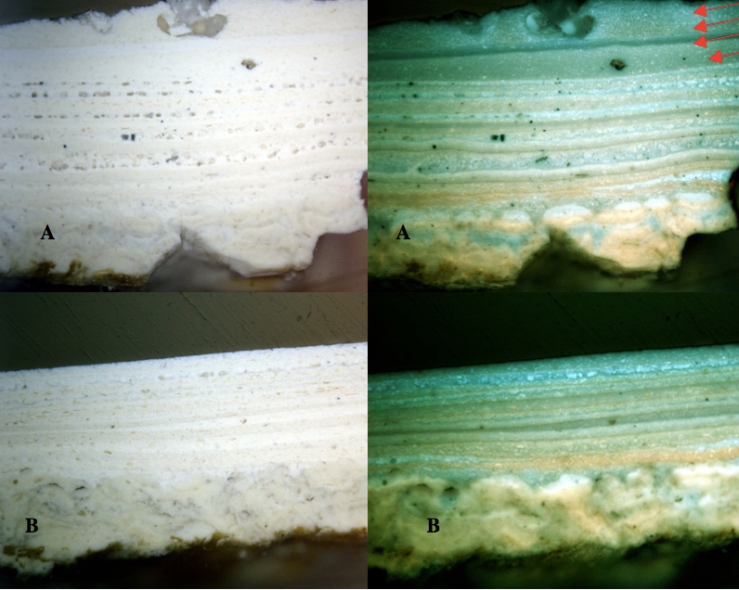
Here the State House Dome paint stratigraphy viewed in UV light (right half) become distinct. In this instance, the top row of images show (latex) paints applied 10 years earlier that were thick and water trapping and which were removed during the 2011 project. The bottom row shows those layers of overburden removed leaving the well-adhered layers of historic paint intact.
Importantly, knowing the composition of paint layers can provide a powerful tool in diagnosing paint failure due to incompatibility. For example, several paint failures in the State House complex resulted from modern latex paints applied over oil paints that were originally applied over water-dissolvable emulsion paints. The differential swelling, contraction and breathability of these later paints contributed to adhesion failures in several spaces.

The Maryland State House dates to 1779 and the current dome was completed in 1792 after storm damage to several earlier roofs. This is the oldest continuously operating state house in the country. The Old Senate Chamber (still used today to open each legislative session) was where George Washington resigned his military commission in 1783 and where, the following spring, the Treaty of Paris was ratified, officially ending the Revolutionary War. At that time, Maryland’s State House was also functioning as the national capital. More on this history at Wikipedia.
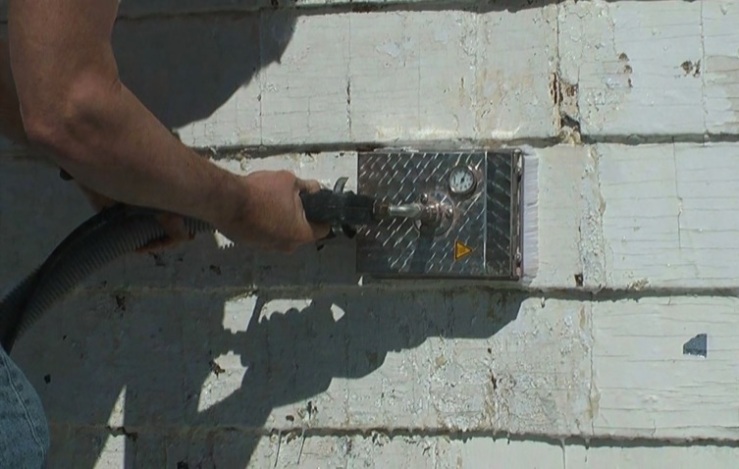
The paint failure addressed in 2011 was largely the result of very heavy layers of latex applied atop 17 layers of oil. Latex is a fantastic way to strip earlier paints. This is largely due to water moving through latex paints, causing them to expand and contract. This movement exploits weakens inelastic oil layers below. Recent caulking was also trapping water in the wood shingles. In some cases this had caused shingles to swell, warp and split. Since water is always moving through buildings, so it is generally best to not try to block water on historic buildings with sealants. The main focus of the 2011 project was to remove the latex to get back into sound layers of oil paint, while re-establishing the original breathability of the dome system.
A Recyclean vacuum system allowed for the thorough clearing of gelled paint stripper used to soften and lift the top layers of incompatible paint during the 2011 campaign.
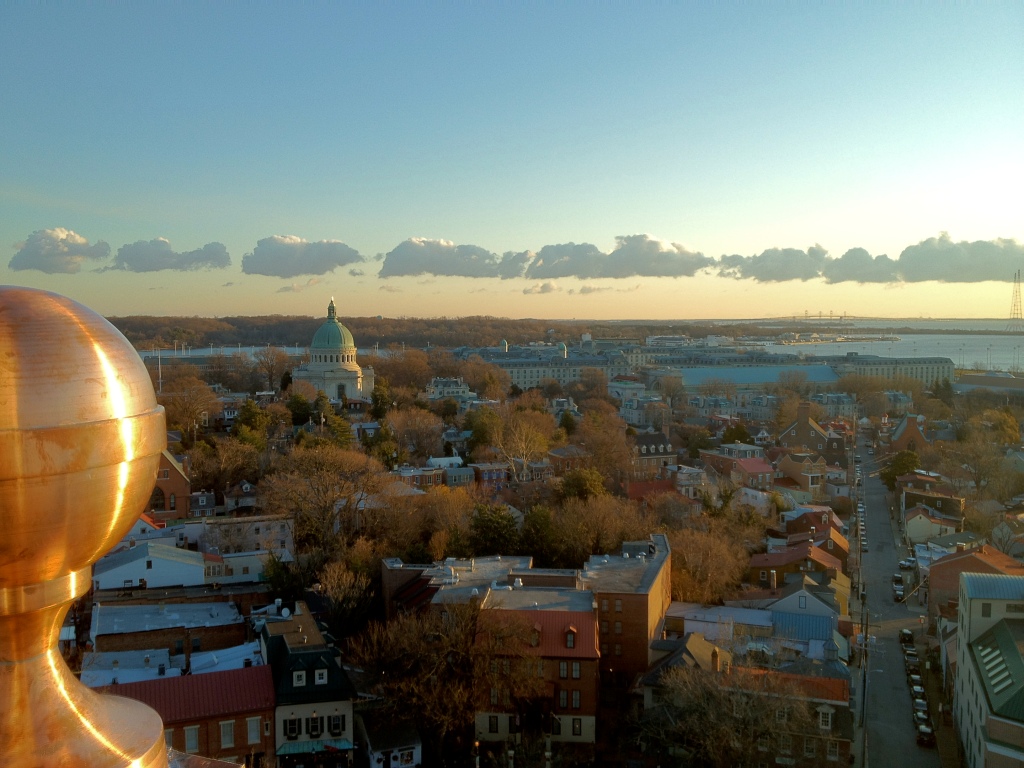
What we found in the process of looking for the physical evidence was that it also added to our understanding of the archival record. The paint evidence both confirmed contemporaneous annotations and connected the involvement of an important artist in the dome’s expression.
Charles Willson Peale was more than just an artist, he was THE portrait artist of the day and America’s first native-born artist of caliber. He would in time paint 60 portraits of George Washington alone. More about this fascinating American who would also go on to open the first museum of natural history in America and fathered numerous other famous artists can be found here on Wikipedia.
What was particularly compelling about our look at the paint history was finding that much of the dome had originally been painted a peachy-flesh tone that was over-coated with a golden glaze. It appeared the intended effect had been a golden dome – on the cheap since resources right after the Revolution were limited. In fact, although the original glaze used might not have held up for long, the golden appearance had been maintained – although in a single coat application of paint – two more times before the color scheme changed.
Could it really be that the demure gray and white everyone in Annapolis was accustomed to seeing was historically inaccurate? The firestorm of opinion raged for months until the Maryland Historic Trust decided that the original paint scheme was less important than matching the dome colors to the later additions to the State House.

Highlight from Charles Willson Peale sketch depicting “straw” as a key dome color. Clicking here redirects to the full image on the Maryland State Archives website. Keep in mind this sketch was made concurrent with the installation of Benjamin Franklin’s lightning rod on the State House dome, the first public building fitted with this novel feature. The Franklin lightning rod remains in service to this day.
Even more interesting was that where the color of the oval windows was not annotated on Peale’s sketch, we would find the was likely because the final color was unsettled at that time. Our sampling showed they were testing out color schemes of red versus blue in rapid succession as the earliest paint layers showed no sign of dirt deposition or weathering between the first few color applications.
So was Peale present while color decisions for the Statehouse dome were made??
Peale’s involvement in recording the paint treatments seen on the dome makes the manner in which the “straw” was achieved far more interesting. Most colors of this period were built up out of several hues and the peach tint that was used as a base for the glaze was the method used for achieving female elements in art of the era. By contrast, the solidity of men at the time was expressed in gray stone hues.
It should also be noted that Charles Willson Peale was creating his drawing at the time that Benjamin Franklin’s largest public institutional installation of a lightning rod was being placed on the Maryland Statehouse dome. Peale’s journal entries on the surrounding days highlight the thoroughness and detail of his record-keeping practices…including how his hands were going numb from his taxidermy work using arsenic and needing to treat the beds at home with mercury to address fleas — all this for a man who lived to 85, dying in 1827, and fathering 10 (mostly famous themselves) children.
The State decided to stick with the Colonial Revival palette despite the more interesting historical paint evidence (and impending War of 1812 centennial, a time when the Maryland dome would likely have still been gold hued). Yet because we left all of the early oil paint intact and protected beneath the white-painted slate and cedar shingles to inform the future, and so no avenues were lost.
Author’s aside: Given that the sprinklers mounted on the exterior of the dome unpredictably engage with nearby lightning strikes which often leaves rusty water stains running down the white-painted drum of slate at the oval windows, we had further hoped that a golden colored dome to camouflage these stains might one day make restoration to the earlier polychrome appearance more popular with the preservation community. Instead, those stains would instigate the wholesale loss of much of the original fabric of the dome in 2022.
Never should we assume the past was sepia-toned. Rather than think of colorful renderings as an artist’s flight of fancy, the works of period artists can often help us to understand the interior and exterior palettes of the era. We hope this blend of archival and physical evidence informing our past has been a good introduction into what paint microscopy can tell us about our more colorful past.
There is a tendency on preservation projects to sample historic finishes and then obliterate them. To hope that having recorded this information will somehow inform the future is pure fantasy. Most organizations can not find a ten-year old report, let alone anything older. And most of the time they would not even think to search those earlier documents. We must maintain the evidence in place if it is to inform the future – especially as our ability to analyze the remaining information expands with new means of analysis nearly every decade.
The paint evidence on this project is fascinating for the curious, so it is unfortunate the polychrome history was not re-established for public interpretation. In upcoming posts we will show results from other projects that allowed full interpretation of the evidence, making seemingly “dumpy” little buildings that contractors might have felt they were “stuck with” into icons that everyone could appreciate.
Far from a simple color analysis tool, in future posts we will look further at how fluorescence microscopy can confirm or deny our suspicions, while providing great insight into the past. Microscopy can – and should – guide the treatment process.

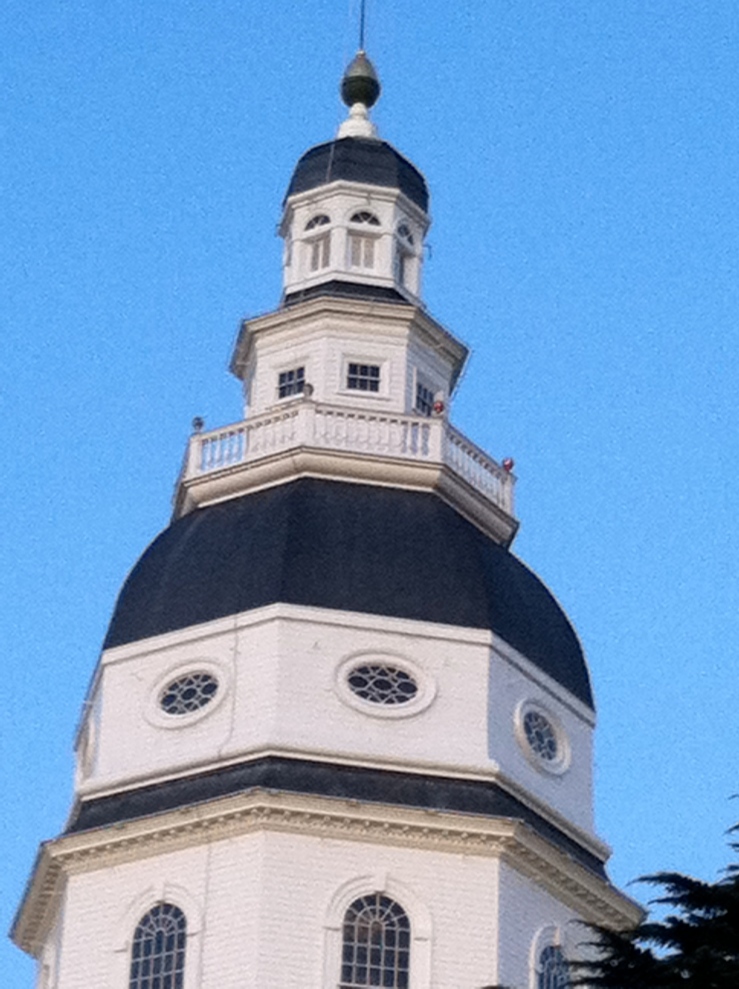

You must be logged in to post a comment.